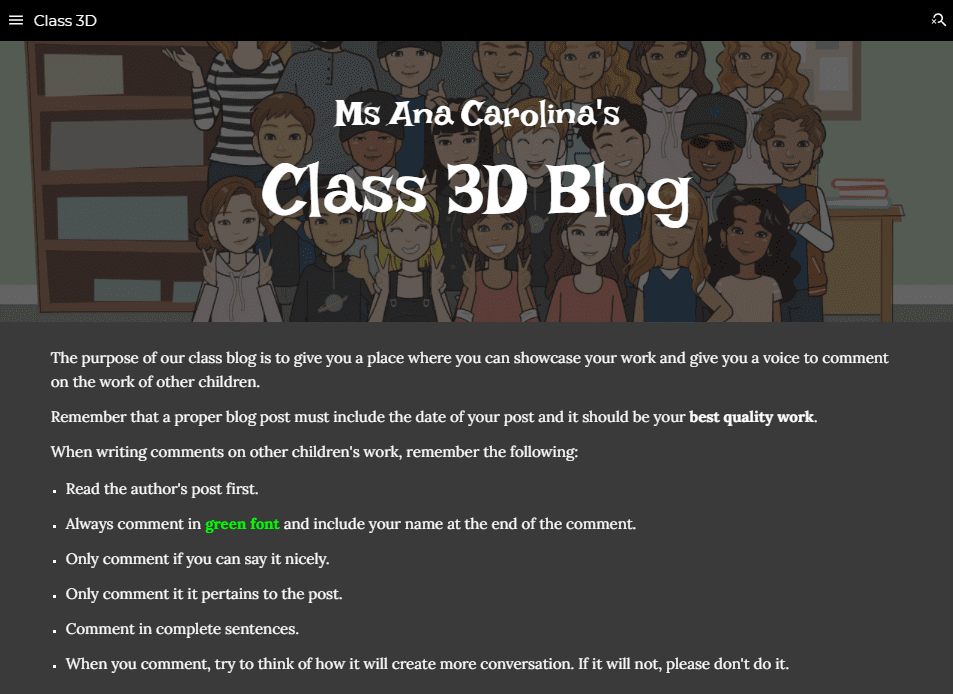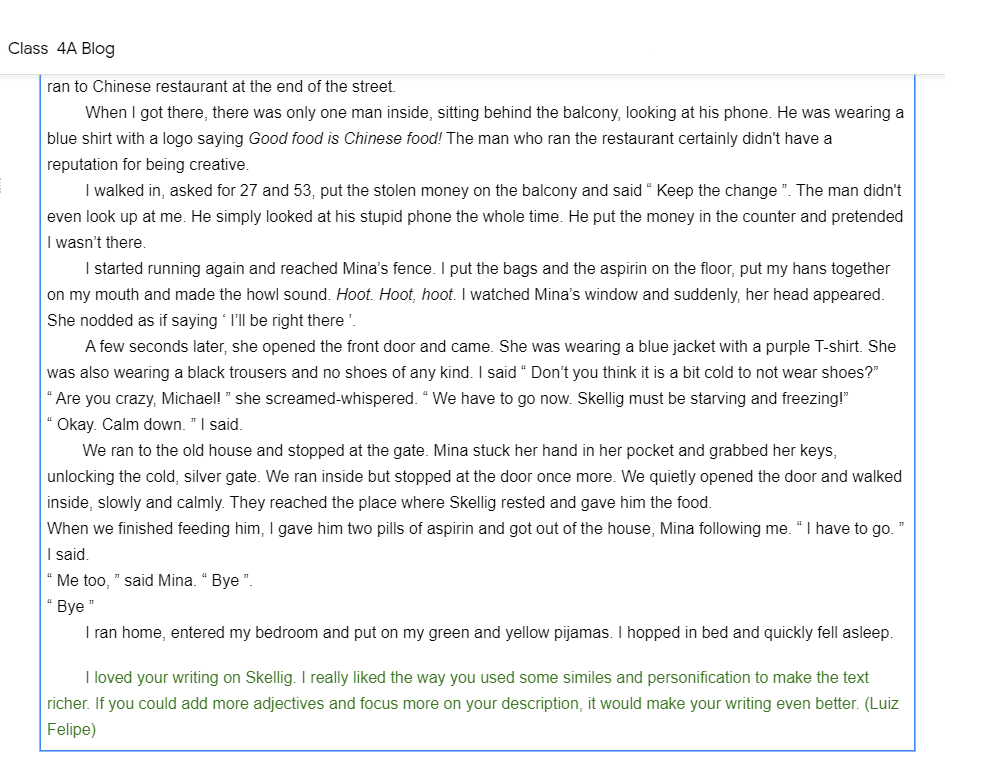In an effort to encourage writing and teach digital citizenship, we have recently set up blogs for students in our Milepost 3 section (9 to 11 years).
Blogs evolved from online diaries in the mid-1990s and are now commonplace all over the Internet as a way of connecting writers to relevant audiences. Blogs display information in reverse chronological order, with the latest posts appearing at the top of the page.
I have been writing this blog, Technology for Learners, for almost a decade now. As well as giving me the opportunity to reflect on pedagogy and educational technology, it has enabled me to connect with thousands of other educators all over the world.
Many businesses and organisations in fact have blogs because they serve as effective lead generation tools, enabling their services to be more discoverable and keeping them connected to their clients. Creating high quality posts helps businesses and organisations look more credible, and this is particularly important when the brand is still young and not well known.
As a “diary-style” website, a blog can be a very useful learning platform in education, as it can serve as a brilliant way to get students to practise their writing and showcase their learning.
Each class teacher in Milepost 3 now has their own Class blog website, which includes a dropdown menu with links to each of their students’ blog pages. In preparation, the children have been receiving lessons related to e-safety and netiquette to help them understand the importance of appropriate and responsible behaviour online. Moreover, by using Google Sites to create these blogs, the platform can be closely monitored whilst being shared with specific audiences within our school community.
In this video tutorial below, I explain to children how to edit their blog page:
The blogs have provided each child with an opportunity to put together a purposeful collection of their best written work as well as helping to record their learning journey. The value of this type of activity, in which students create a portfolio to showcase their learning, has been well documented in education. By demonstrating the development of knowledge, skills and understanding over time, we are expecting the students’ blogs to make valuable assessment and learning tools.
We know though, based on educational research, to ensure deep learning, it is not enough for students to simply showcase their work. It is also important that students reflect on the work they have produced, and this can be done by getting them to write and respond to peer feedback.
Teachers have therefore been delivering a series of lessons to help students provide valuable feedback to one another in which each student writes a positive written comment and an ‘even better if’ statement on at least one other child’s piece of work. Such feedback takes the form of ‘blog comments’, as each student writes in green text underneath the work of one or more of their peers.
Some examples of comment starters and ‘even better if’ statements can be found below.
Comment Starters:
Reading your ……………….. , I learned that ……………
I enjoyed reading your ….
You have helped me to change my thinking about….. because….
I like the way you ……..……………..
Now I understand more about….
It was interesting to discover that…
It was really interesting when…
Something you have done particularly well is to…
I was surprised to learn that…
I was most interested in….
The most useful part of this for me was
This learning reminded me of….
Even Better If:
I am wondering…
I would like to know…
This piece of writing is interesting and would be even better if it included … For example, you could say something like …
That being said, can you think of a way of using ….
Remember though, be careful with your use of tense. I noticed you used two different tenses in the same piece of writing. For example, you said …
I just noticed, watch out that you use singular and plural words accurately. For example, I saw that you wrote, ….
Try to use some commas to help structure your writing.
You could use a thesaurus to add more interesting words into your text.
Specifically, we want to avoid children writing bland and unimaginative comments on other children’s work like “nice writing” or “very interesting”. Instead, with the help of a comment bank, we encourage children to write thoughtful comments on other children’s written work, which are both motivational and moves learning forward.
As part of this effort, each member of our site leadership team has been assigned to a different Milepost 3 Class blog in which to provide weekly written comments and feedback. Drawing on the Creativity, Activity, Service (CAS) programme of the International Baccalaureate, we have also enlisted the help of a group of senior students to write comments on our students’ blogs.
Concluding thoughts…
As well as providing an excellent opportunity to explore digital literacy, helping students to understand the important concepts of e-safety and netiquette, we are expecting this initiative to be a further catalyst in promoting children’s levels of English. By having a wide audience for their blog entries, we notice that students are now spending more time refining their written work and helping, through peer feedback comments, others to do the same. This not only improves literacy but serves as a valuable tool for reflection. As a team, we are keen to build on this blogging initiative to continue sharing new and wonderful examples of children’s written work across our school community.





